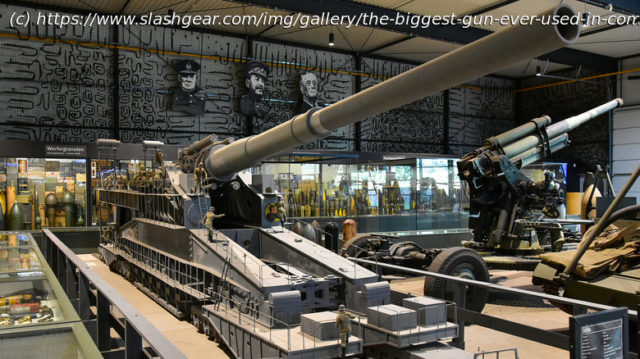During World War II, as France had bolstered its defense with the Maginot Line, Germany designed an absolute bunker buster of an artillery gun to break through.
There are guns, there are really big guns, and then there’s the Schwerer Gustav. Before we dive into the specifics of this bigger-than-life gun, we need to know why Hitler wanted it built. Other than the fact that it was Hitler doing «Hitler things,» of course.
France began building the Maginot Line in 1929, a 280-mile-long defensive fortification that started on the French side of the English Channel, and stretched south to the French-Swiss-German border. It was constructed using 55 million tons of steel and 1.5 million cubic meters of reinforced concrete.
With the aftermath of World War I still relatively fresh in their minds, France meant for it to protect them from Germany should it decide to flex its muscles again. The structure consisted of over 140 artillery forts, 350 gun emplacements, and as many as 5,000 other bunkers, storehouses, and barracks. It even had an underground railway to move soldiers and ammunition wherever needed.
No one seems to agree on a single completion date, with years ranging from 1934 to 1936, and even as late as 1939. Whatever the actual date, by 1934, Hitler already knew he was going to invade France because that’s when he ordered the Nazi high command (Oberkommando des Heeres) to commission a weapon that could penetrate and destroy the walls and fortifications found along the Maginot Line.
[Featured image by Paul Hermans via Wikimedia Commons | Cropped and scaled | CC BY-SA 4.0]A big gun required big ammo
The high command tabbed Essen-based weapons producer Friedrich Krupp AG to build a bunker-busting weapon that, first and foremost, could bust through walls made of three feet of layered steel or 23 feet of reinforced concrete. It had to accomplish this by firing at the target from a considerable distance to avoid vulnerability as well. What Krupp AG created was the largest, heaviest piece of artillery ever used in combat.






